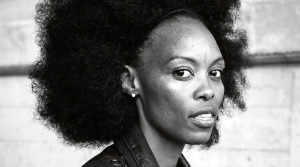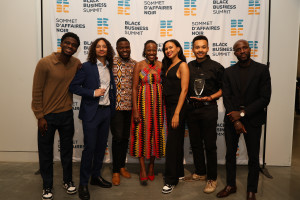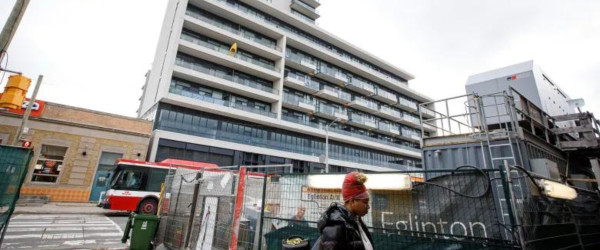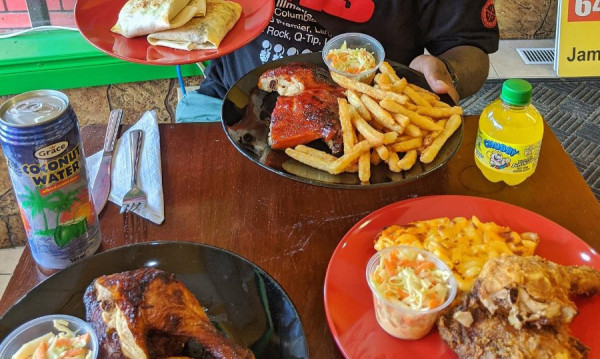This local nonprofit strives to enhance Black community engagement around urban issues in the city. Established in 2018, BUTO was created in response to the negative impacts of the Eglinton LRT construction.
While the LRT will be helpful, the construction has devastated businesses, forcing many of them to close, including the iconic Randy’s Patty Shop.
Little Jamaica residents, while hopeful the LRT will bring new business and ease commuters, have complaints about how Metrolinx has approached its construction in the community. Pipes left on roads, barricades blocking businesses, and clouds of dust are just some of the issues residents were forced to face. For all this chaos, the community just hopes they can benefit from the increased accessibility, but there is a real chance that Little Jamaica could be torn apart by gentrification through density.
{https://www.instagram.com/p/C3GyjCrtbIN/}
Part of the plan for the Eglinton LRT includes densification. The Ontario government plans to turn the area into a transit-oriented community, complete with mega blocks of condos. Government-led gentrification has always been an issue for the Black community because of class and race.
BUTO is not only informing residents of what urbanism has in store for their spaces, but also how they can use gentrification to their advantage. Director of Communications Anyika Marks believes the community, a centrally located area of the city, should house more people but not at the cost of displacing longtime residents.
“Displacement is a real concern. I think with the development; it has really put a spotlight on the precarious nature to which Black people exist in their neighbourhoods,” Marks noted.
In order to leverage gentrification to the benefit of the community BUTO wants to start a land trust; a form of cooperative property management. If successful BUTO may be the first land trust specific to a Black community in Toronto.
{https://www.instagram.com/p/C6ZwL51No9j/}
What is a Land Trust?
A land trust is a legal entity that takes ownership of, or authority over, a piece of property at the request of the property owner. These trusts are living trusts, allowing for property management while the owner is alive. Each land trust’s terms are unique and can be tailored to individual needs. A community land trust (CLT) is a nonprofit organization that owns land on behalf of a community to promote housing affordability, sustainable development, and equity.
Community Land Trusts buy properties to provide services for their stakeholders, which in BUTO’s case is the Little Jamaica community.
Other land trusts like the Parkdale Land Trust or Chinatown Land Trust operate the same way for their respective communities. Again, each CLT operates in its own way, with their own specific rules, but there are some generalizable aspects:
- They acquire land through public and private investment funds which the organization permanently owns.
- Community residents can purchase or rent their homes but not the land they’re built on.
- Residents enter into long-term property leases (ground leases) with the CLT (usually for 99 years).
As a piece of land that is not on the open market, CLTs remove homes from the financialization and profit motive of housing. Unlike the market for books or coffee, housing does not operate according to supply and demand. We need homes. Whether you’re a renter or buyer, housing is a necessity. If the price gets high, yes you can move, but you still need a home.
That effectively makes the demand for housing unlimited. As long as supply does not meet everyone's needs, then housing can continue to be profitable. In this market, profit is made by reducing supply, which is why Canada's cities and towns don't build housing anymore; it's not profitable to house everyone. By taking land out of the market, CLTs can set the price of homes to house humans, which is the point of housing. But first, they need financing to buy property.
How to Fund a Land Trust
I attended the BUTO conference on April 27th - It featured different housing providers and politicians, including the mayor, but also social financiers Tapestry Capital. Tapestry Community Capital is a Toronto-based nonprofit cooperative. The organization works with nonprofits, charities, and other community groups to fund projects without any profit motive. Since its founding in 1998, the group has raised over $100 million for over 41 clients.
The main vehicle for helping groups with financing is a community bond. Community bonds are fixed-rate loans that an organization borrows from its community. They work like government or corporate bonds except in terms of control.
“Unlike a traditional bank loan, where the power is typically held with the financial institution, community bonds democratize the access to capital,” said Kyle Zhang, Growth & Impact associate with Tapestry. “They (nonprofits) get to set their own interest rates, term length, and investment minimums to almost create a form of bespoke financing specific to their project and financial needs.”
The social return on investment is a distinguishing factor between community and traditional bonds. While returns for community bonds are between 3% and 5% (similar to government bonds, lower than corporate bonds), the investment is used to improve the communities in which investors often live. The social connection is the main reason 70% of investors invest in community bonds.
“In terms of a return perspective, it does typically come at a slightly lower rate of return, but the social return on investment compensates for that lower financial return and enables more of these nonprofits and charities to finance meaningful projects.”
Some organizations Tapestry has successfully worked with include Indwel, an affordable housing group in Hamilton, and the Kensington Market Land Trust. The former is a Toronto area land trust that already has one building in its portfolio and is collaborating with Tapestry to buy more buildings in the Kensington area.
“So once we did that initial feasibility study, we knew that they had a business case and that they had a revenue model to repay investors. We then moved into the structuring phase with a developed 5-10 year business plan, offered statement, term sheet, conducted a legal review, developed a sales and marketing strategy, and set them up on our investment management platform.”
The Kensington Market Land Trust has set up its bond and is currently taking on investors. The whole process took about three months but can change depending on the capabilities of the organization. For many groups, community bonds allow for financial and institutional flexibility that bank loans or government investments do not provide. However, it's important to note that community bonds average roughly 10 to 50% of the total investment needed by any social project. The rest must come from other sources.
Black Lands & Community Trust
Recently, Zhang’s work has seen him collaborate with a host of new Black land trusts, nonprofits, and cooperatives such as BUTO and the African Canadian Housing Collective (ACHC). Both Black housing projects are still in their infancy, and are looking at several options to fund their initiatives. Moving towards social finance is seen as a move for autonomy. By self-funding their projects BUTO and ACHC can avoid relying on government grants, which often come with stipulations such as including residents from their intake system. Relying on government sources would mean housing people outside their respective communities.
In our world, you are at the mercy of whoever is funding your activities. If Black organizations were to rely solely on government financing, they would be accountable to the government, not the community. Tapestry's model allows community members to be investors and allows these organizations the flexibility to set their own terms.
“We've already had some initial productive conversations around how we could work together because clearly they are very interested in involving the community to take more of a community ownership model,” Zhang said of their work with BUTO.
Anyika Mark agrees. “We really want it to address things like gentrification, the affordability crisis, and culture erasure by giving the community the ability to own property.”
South of the border, Black people have been waiting half a century for their 40 acres and a mule. Black Canadians can't wait for broken promises from political officials. Starting with Little Jamaica, we can fund our own spaces through social capital.
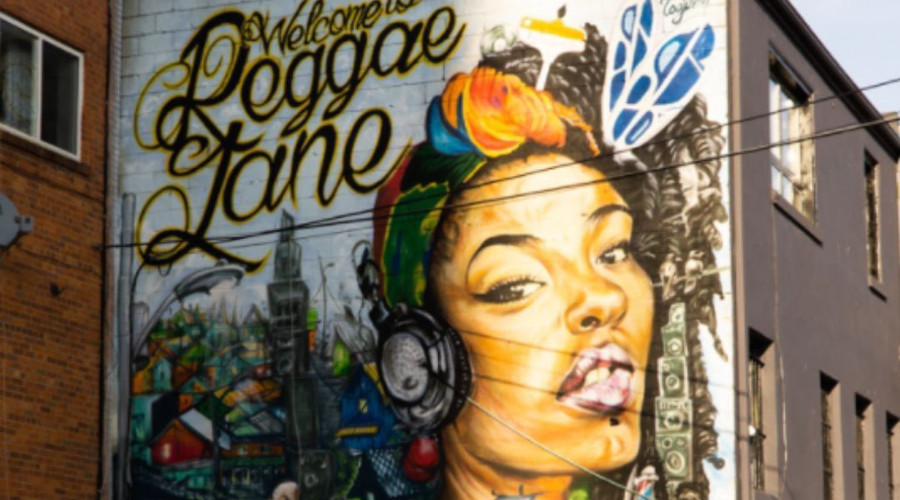
 By
By 




